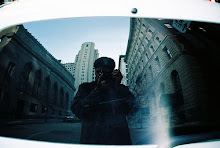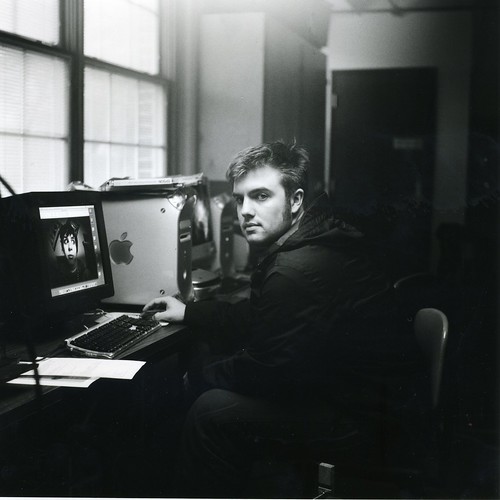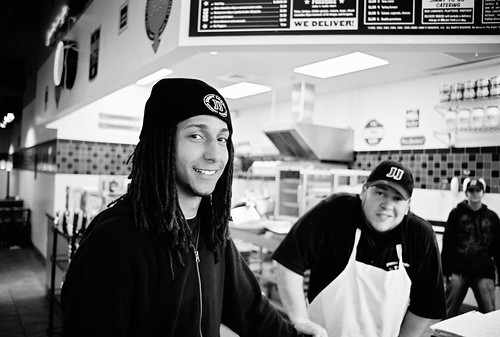Digital Waste and Film Savings!:
Let's get real with each other and clear up the misconceptions and discover the true benefits of film versus digital and how each has its own place in the art of photography.
I have thousands of dollars worth of equipment I've collected over the past 3 years, I've finally come to understand some critical realizations I will be sharing.
Everything has its place: film and digital cameras are no exception.
Can each produce beautiful results? Yes.
Film and digital are each capable of producing high quality images. The key to beautiful results lies with the photographer - rarely if ever with the camera. "A cheap" camera is never a valid excuse for not making beautiful photos. Pro cameras tend to have a more complicated features and more durable bodies, but almost every camera allows for manual control settings, thus creative venture is now in the hands of the photographer. Let's never let the camera stores and companies make us believe that we must have the newest camera to make beautiful images.

Artists never just have one pencil or brush; likewise, a photographer has more than camera for the specific job. Not all photographers have more than one camera, but quite a few day.
Are both easy to use? Yes and No.
There's only one instant camera - that's Polaroid. Everything else, sorry, is not instant. Film and digital have their own distinct advantages.
Digital pluses: Digital gets the picture to you quite quickly and you can see how the photo came out immediately. You have the option to shoot as much as you want and erase as you want. Working with the photos is simplified from film because you don't have to scan the negative... it's digitized already.
Digital minuses: Archival can be hard - you have to be careful of hard drive and storage failures. You can take more photos and when going back, there will be hundreds and even thousands of photos to search through - time consuming. In the future, there's no guarantees you'll have software to work with old RAW files. You need to have a well calibrated monitor to see the photos properly. Digital cameras tend to cost more than film cameras and have shorter life spans.
Film pluses: A negative can yield high resolution digital images. You enjoy the old fashion way of making prints ;) You shoot less, make each photo count, and get overall winners... that's what's life is about, right? You want to get photos that you enjoy, not out takes. Archiving film, you don't have to worry about your negatives crashing or being too obsolete to use. Your film camera will outlast your digital by many years, even decades. One of the largest bonuses is that you can miss the exposure and still get a good image. So if you should have shot at 1/125 instead of 1/250, film is forgiving. Of course, getting the exposure is always best.
Film minuses: Not as good for situations where you need the image as soon as possible - an element of patience is required. If you scan film, this can be an extra step in the work flow. Film is not used as much as it was in the past and fewer labs are supporting medium and large format films.
The Film Investment and the Digital Loss:
It took me about 2 years to realize what I'm about to tell you: Film is awesome.
For everyone that might not be true, but for me and my purposes, it certainly is. I bought my first camera in 2006 for my trip to Turkey. At $600, the Canon 20D seemed like quite an investment at the time and before I bought it, I felt I'd be barely fortunate if I could buy a camera for $400. As you'll hear, digital is leading the way - or is it? I enjoy how I see my photos instantly as I take, so I can check to see if I got the exposure and if I got the details correct as well. The digital camera is by far a great tool for beginners. I still use digital for business uses, but beyond that, the digital camera stays in the closet.
Anything I feel is important, I run to grab my film camera because film isn't going anywhere and don't let anyone convince you otherwise. Film has been here for over a hundred years , and while the support is waning, it certainly has a strong following. So we can all be rest assured that we'll be able to have our negatives printed in the years to come.

Film exposure is forgiving: you can miss a stop or two, you'll still be fine. The right exposure is the best exposure, but it gives peace of mind that I can still get a great image in the darkroom from an image that was a little underexposed or overexposed. From my experience, digital hasn't given me this ability to the extent film has. The photo of my friend shows an image that was overexposed several stops. I was still able to recover a good deal from it!
The camera I shot Gus with is a Yashica 635 from the 1960s that was mint condition for $180 with a light meter. I don't even use my digital camera from 4 years ago, but this camera keeps on shooting. Not only that, but because of its leaf shutter, the Yashica is extremely quiet and doesn't vibrate allowing me to shoot at much lower speeds without blurring. The film runs $3.60 for 12 frames of black and white, and this comes out to about 30¢ per image... that's very little considering film users make every image count especially if you're cheap (I prefer "frugal") like myself.
I love both mediums - I just prefer film for personal use and digital for the clients. It's America and people live life in the fast lane. In every day words, that means photographers need to deliver on demand. When I fulfill my passions, you won't see my lugging around a huge setup, rather you'll see me with my sleek little Yashica photographing the important aspects of my life.






